Environment
Climate Change
Artic sea ice shrinking (Sep 2023)
Is polar ice melting? (Feb 2023)
Arctic Sea Ice Reaches 2019 Minimum Extent(2019>
Aerosol Similation (2015)
NASA Goddard Space Flight Center released recently an animation video showing aerosol emission and transport from September 1, 2006 to April 10, 2007. The emission locations are indicated by red and yellow dots, of wildfires and human-initiated burning as detected by the MODIS instrument on NASA's Terra and Aqua satellites.
Rising Seas
1 December 2025
Tropospheric Water vapor
Global warming is almost universally accepted by everybody. The ice sheets in the Arctic and the Antarctic are melting fast and elsewhere ice glaciers are becoming smaller, but the global sea water levels are not rising fast as expected. Some scientists think the melting thick ice sheets have released the pressure on earth crust. The crust under the ice sheet might rise up and the upward movement of ice sheet might alleviate the expansion of sea water volume.Global warming affects the sea water temperatures and impacts on El Niño-Southern Oscillation. The evaporation of sea water and water on the land contribute to water vapor in the mid-troposphere and upper-troposphere. The water vapor is an important component of the troposphere and changes the density of clouds inside. The variations of the water vapor component are crucial to global climate change. The relationship of water vapor and the weather change is not fully understood. However, in recent years, there have been large floods all over the earth, for example - huge floods happened in South Wales (UK) and in Southeast Asia (Indonesia & Thailand) in November 2025.
Ref: Li, Chen et el – “Response of Upper Tropospheric Water vapor to Global W arming and ENSO” (www.nature.com/scientificreports, 12 march 2024)
Living shorelines: How nature can help us beat back rising seas (2016/9 & 2018/7)
Other project: Creating Pensacola's living shorelines (2015/11/19) (https://youtu.be/TNTQTYaMQ7Q)
6 March 2013
Disappearing Sea
In 2000, there were reports about the ecological disaster of the Aral Sea. Now, after 13 years there are improvements but also deterioration of its condition.Read More
Blue-Green Algae Bloom
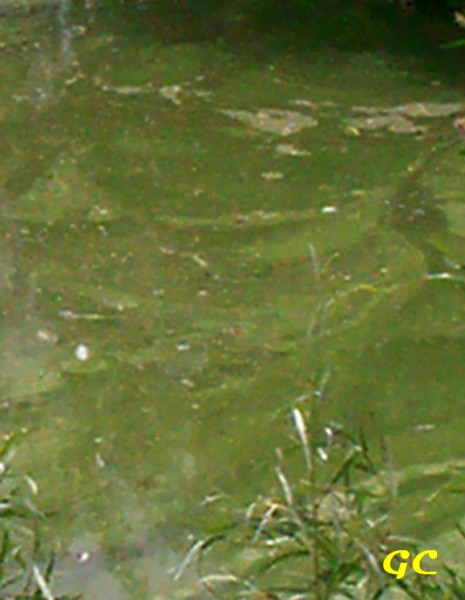 Recently, news of green algae tides suddenly carpeted many large water bodies in China and elsewhere.
The algae is called Blue-green Algae or Cyanobacteria (derived from the colour of Cyan), commonly known as pond scum.
Recently, news of green algae tides suddenly carpeted many large water bodies in China and elsewhere.
The algae is called Blue-green Algae or Cyanobacteria (derived from the colour of Cyan), commonly known as pond scum.
Read More
Videos
Megadroughts Projected for American West (NASA, 12 Feb 2015) (https://youtu.be/ToY4eeWsdLc)Rising Sea Levels (2012 MNBC TV)(http://youtu.be/t0ddlkFqZ4Y)
Sinking Paradise, Carteret Islands, Papua New Guinea (http://youtu.be/Hgw4HTtokgk)
Manus Island (http://youtu.be/AQ7EVZDSXKA)
* If your browser does not open the video here, copy and paste the address to another window.
Economy Doomsday
Back in the 1970s, an elite group of scientists, researchers and consultants had researched and debated about
the future growth of the world economy, using computer model s developed at MIT.
The models assumed no major change in the physical, economic, or social relationships that governed
the civilization for the last 100 years. As the world population grew exponentially from 1900 to
the middle of the 21st Century ... Read more
14 December 2012
Movie - "The Day After Tomorrow"
In 2004, the 20th Century Fox released a mega Hollywood science fiction film. The movie depicts a doomsday drama when the Earth suffered a global storm
with three gigantic epicentres. The storm was triggered by melting of arctic ice which affected the ocean currents; in turn the storm fundamentally changed the
global atmospheric balance and pushed the Earth into a new ice age. One might consider the movie a unreal melodramatic exaggeration,
because such unbelievable scale of the storm is scientifically impossible. However, the movie might, as the producer
hoped to intend, allow the audience to pay some attention to the increasingly intensity of present climatic changes and to the alarming rising records of sea levels.
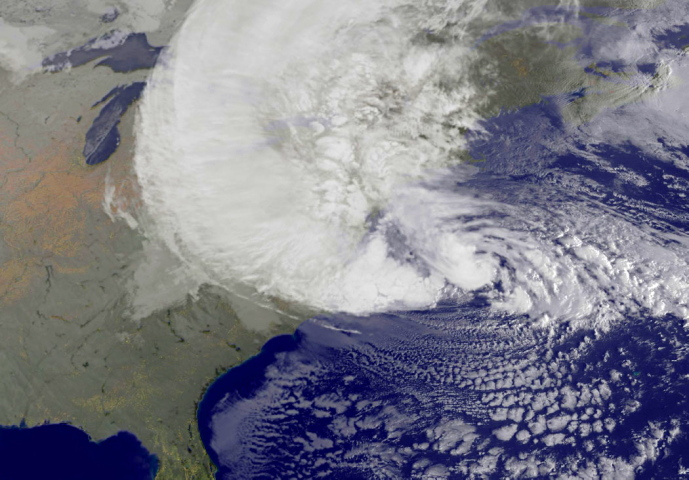 Notwithstanding the actual causes of the global warming trend (because of human activities or not), the realities are: First, the climate is rapidly getting into a warm period and the polar ice sheets are melting fast at an accelerating rate. The ice formed starting from the Pleistocene epoch to recent thousands of years ago could be totally disappeared within this century.
Then, the global warming trend has already produced noticeable changes in climate patterns.
We should expect in the foreseeable future more abnormal intense turbulence in the weather - such as drought, flood, tornado, mega-storms, etc..
One good example is the latest unprecedented formation of Hurricane Sandy that battered eastern North American shores
Notwithstanding the actual causes of the global warming trend (because of human activities or not), the realities are: First, the climate is rapidly getting into a warm period and the polar ice sheets are melting fast at an accelerating rate. The ice formed starting from the Pleistocene epoch to recent thousands of years ago could be totally disappeared within this century.
Then, the global warming trend has already produced noticeable changes in climate patterns.
We should expect in the foreseeable future more abnormal intense turbulence in the weather - such as drought, flood, tornado, mega-storms, etc..
One good example is the latest unprecedented formation of Hurricane Sandy that battered eastern North American shores
The movie had a budget of US$125 million and brought in US$544 million at the box office. It was produced and directed by Roland Emmerich and starred by Dennis Quaid,
Jake Gyllenhaal, Emmy Rossum, Ian Holm, Sela Ward.
Hurricane Sandy battering the U.S. East coast
310 miles south-southeast of New York City
29 Oct 2012 (Credit: NASA GOES Project)
Searching for The New Earths
Another video - What would happen if humans were to disappear from the earth? (http://youtu.be/WxCd2-7-aJA)
Environment][Animals][Birds] [Plants][Space][Videos] [Bottom of Page]
Animals
Polar Bear
Old article: Read Status of Polar BearA Pony with an Artificial Leg
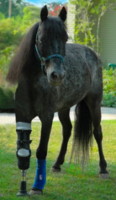
In 2005, the gray Shetland pony was abandoned by her owners when Hurricane Katrina hit Louisiana;
however, she was rescued and taken to a farm shelter for abandoned animals. Over there,
she was attacked by some dogs and her right front leg suffered severe lacerations.
The injury was so serious that the veterinarians agreed an amputation of her leg was the only option.
In January 2006, Molly had a surgery operation and later she was fitted with an artificial leg.
Now, this inspiring story spreads over the Internet, and a children book, many articles and videos have been made about Molly.
Read More
5 Feb 2008
The Fate of Working Horses
...
On Saturday, 3 May 2008, a jovial crowd of 157,770 witnessed another tragic death of horses at a race track. As soon as Eight Belles, the only filly among a field of 19 colts, passed the finish line, she fell to the dirt track. She shattered her front ankles and could not get up again. It was necessary to euthanize the horse before the fans.
... Read More
High Diving Horses
The early 20th century show featured a couple of white pure-blood horses that nose-dove from a high platform into the water at the Hanlan ferry terminal. The famed show was brought by J.W. Gorman (from Boston) to the amusement park of the Hanlan family estate on the Centre Island (Toronto, Ontario). The partners of the show, John Whalen and George Holloway, also owned the horses - one called King and the other Queen. See the other picture in the Gallery.
Read More
[Environment][Animals][Birds] [Plants][Space][Videos] [Bottom of Page]
Birds
| Pigeon Racing | California Gulls |
|---|---|
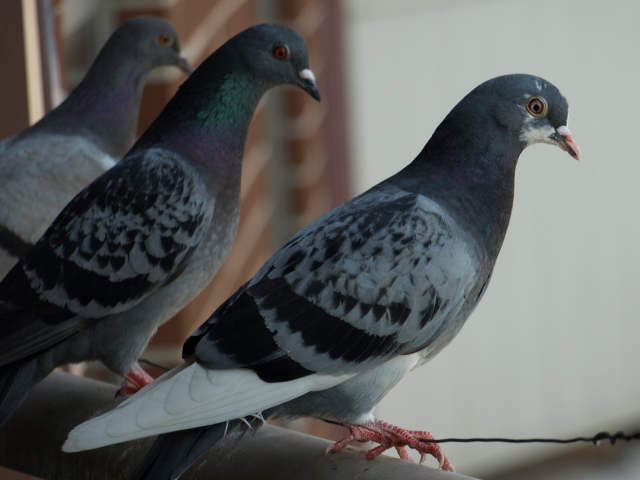 |
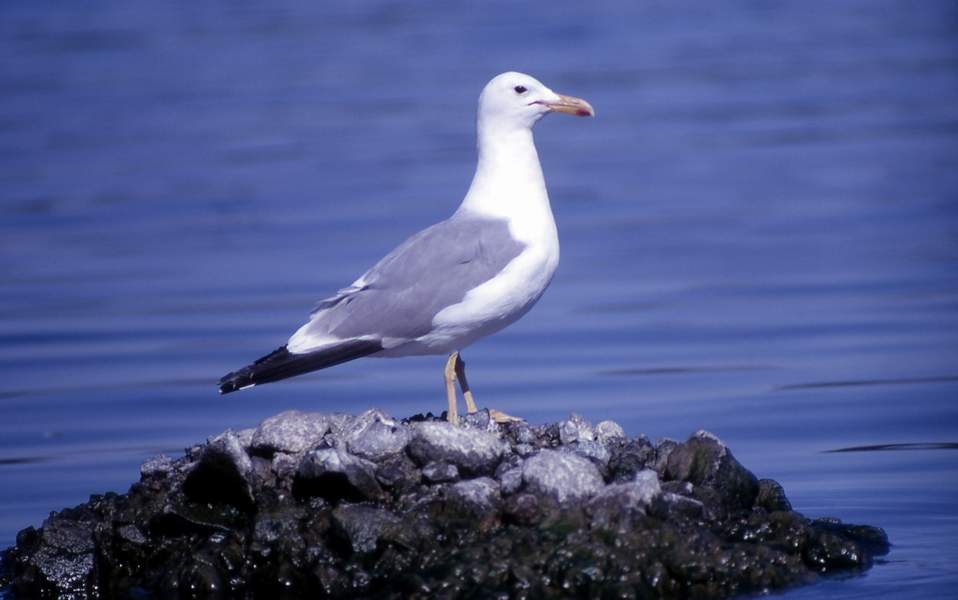 |
| An article about pigeon racing 23 July 2012 | An article outlines briefly the description of the birds, their habitats & an old story (2011) |
15 August 2006
The Passenger Pigeons
Last of her species, died at 1 p.m.
1 September 1914. age 29, in the
Cincinnati Zoological Garden.
EXTINCT
Read More
24 March 2004
A Visitor
Sea gulls are one of the most common birds in the world. No one
can mistake the sight and the sounds of them. They all have the
same white underbody and the familiar cross shape flight
silhouette. However, for keen watchers, there are many "subtle"
differences between various gulls in their large family.
In Toronto, we usually can find the Ring-Billed Gulls and some
Herring Gulls. Both adult birds have a white body and grey wings.
The most noticeable difference is the black ring band on the bill
of the Ring-Billed Gulls. The Herring gulls have only a red
spot on the lower bill. Their sizes and leg colours are also
different. In addition to these two gulls, one also might find
the large Black-backed Gulls which have, as you may have guessed,
black coloured wings.
However, about two years ago at a seminar of the Toronto
Field Naturalists I listened to a sighting report of western
gulls in Toronto. It was a juvenile Heermann's Gull, a common
sight of the West Coast. According to bird guides, the adult of
Heermann's Gull is dark grey, with a black tail, whitish head,
and red bill.
The speaker found the bird around her neighbourhood in the summer
of 2001(?). She had no ideas how it got there. She had provided
it with food to help it survive the winter. Unfortunately, in the
following year she could not find the bird anywhere. Perhaps it
had flown back to the West. Perhaps it had died. She had
communicated with other bird watchers, and was then flying
south to the United States to check out "rare" sightings of a
Heermann's Gull. She seemed certain she could tell if it would be
her Gull when she saw it.
I always see our local gulls taking off in the morning from the
shores to fly to the inner parts of the city. In the evening I
also see them flocking over the city, southwards to their homes.
In the harshest days of winter, no gulls could be found inland
and only a few could be found by the lake. I wonder, "Is it
possible that gulls might wander afar like migratory birds?"
Summer 2013
Pigeon feeding babies
Plants
14 September 2023Kentucky Coffee Tree
Kentucky Coffee-tree (Gymnocladus dioicus) is a moderate-sized canopy tree that
grows fast to 18-24 m high and belongs to the pea or legume family. The tree has scaly tan to dark grey bark and has stout and widely-spaced branches and large leaves.
In the United States, the tree grows from the southern Great Lakes region east to New York State, south to Oklahoma and Arkansas with scattered populations as far south as Texas and north to North Dakota. In Canada, it is found only in southern Ontario with an estimated total population of fewer than 500 mature native trees; the uncommon tree is designated Threatened in Canada under the Species at Risk Act. Some conservatory agencies occasionally planted young trees on streets and parks across cities in Ontario.
Read More
23 September 2014
Edible Weeds
Weeds are often a nuisance to gardeners, who always loathe the backbreaking task to remove the unwanted, unsighted intruders from their loved gardens and lawns. One reason why the task seems to be difficult is that they usually do not have the time to research about the very plants to remove. Most of the time, they do the weeding too early or too late. For example, the vacant spot reclaimed from the removed young weed may be quickly refill by other more invasive weeds, or the weed becomes mature and bears seeds. This page here endeavours to provide some information about several common edible weeds in North America.
Read More3 April 2009
Aloe Vera
Aloe vera (Aloe barbadensis) is a perennial semitropical plant in the lily family and has a long history with civilization.
The early Egyptians showed the plant on stone carvings several thousand years ago.
This plant is quite hardy (Hardy Zones 9-11), resistant to most insects and has few diseases.
A grown plant seldom requires frequent maintenance and does not need much water.
As a matter of fact, over watering is the problem for Aloe Vera as a house or garden plant.
Its roots may rot readily in over saturated wet soils. Most growers strongly recommended a hole at the bottom
of the pot to allow water seep out from the soil. Some advise placing some gravels at bottom of the pot.
The soil should be well drained; a good proportion of the soil mixture is - one third of sands, one third of soil and humus,
and one third of gravels. Adding a few pieces of dolomite stones is also a good idea to lower the acidity in the soil.
Read More
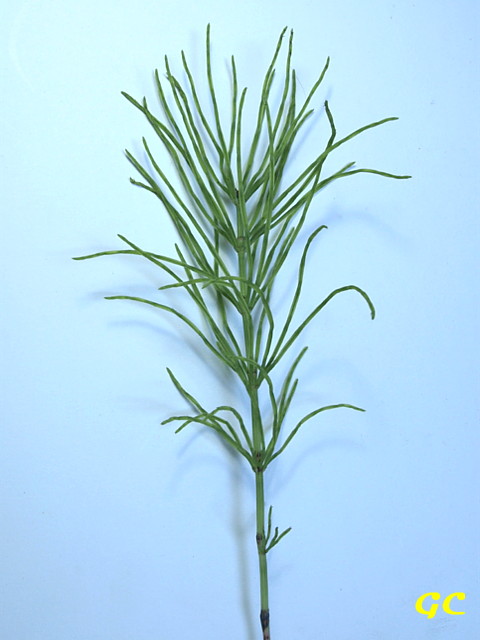
Poisonous Plants - Horsetail
Horsetail is a common weed but can be harmful and even deadly for livestock, particularly for young horses.Read More
[Environment][Animals][Birds] [Plants][Space][Videos] [Bottom of Page]
Space
1983 Reagan's Speech

 : Audio excerpt of a 1983 state-of-union speech of Ronald Reagan
: Audio excerpt of a 1983 state-of-union speech of Ronald Reaganthat covers the space exploration and the environment
(Format: WAV, 5-6 minutes)
20 December 2012
Space Travels

Human space travels have been in the domain of governments since the Soviet Union sent the first human into space in April 1961.
Because of de-regulations and commercialization, private citizens are allowed to participate in the International Space Station (ISS) programme.
Since it was founded in 1998, the Space Adventures Company had sent 7 clients as tourists to visit the station and to stay 7 to 12 days in space.
Last October, singer Sarah Brightman announced that she would be the next client of the company. She had booked a trip to the station.
The 10-day orbital space trip is likely to be taken in Fall 2015. No cost is disclosed, but the trips of other clients cost between US$20 and US$35 million.
The 52 year-old British singer intended this trip to be a part of promotion for her new album. She had already taken medical/physical tests
and was considered fit for space travel. In December 6, the Russian Cosmonauts Training Center said that she had received the official approvals.
The space company also offers zero-gravity flights, sub-orbital flights and lunar mission.
The zero-gravity flights are provided by a special Boeing 727 aircraft. The sub-orbital flights are to be carried by a new capsule to fly at 62 miles or 100 km above the Earth.
The tickets cost $5 to $165 thousand for the zero-gravity flight and start from $100 thousand for the sub-orbital flight.
No information is available for the lunar mission; however, a new Golden Spike company plans to fly manned crews to the moon
and back for a price of $1.5 billion per flight by 2020.
Habitable Planets
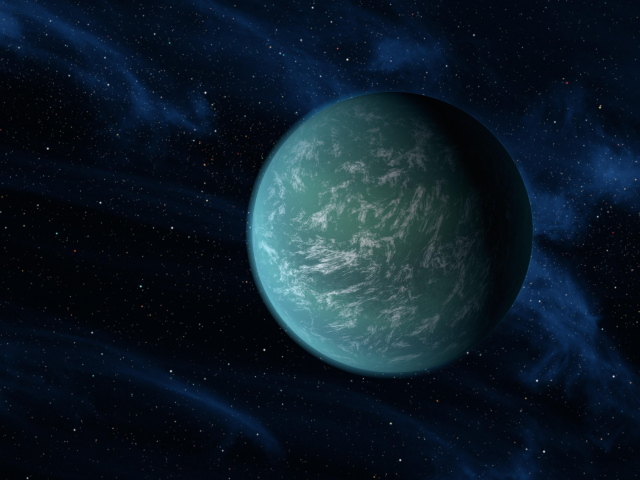
In recent years, astronomers have found scores of planets outside our solar system; the number of confirmed planets is 105 by the end of 2012. In 2012, NASA's Kepler team reported a milestone discovery - an earth-size planet in a habitable zone for life. This planet named Kepler-22B is about twice the size of our Earth and orbits 290 days around a star similar to our Sun. Liquid water could exist on this planet, though scientists have not yet determined of its composition - gaseous, liquid or rocky. Kepler 22 system is about 600 light years from our solar system. The right picture is an artist's rendition of Kepler-22B (Source: NASA/Ames/JPL-Caltech Image)
Videos
Halloween Asteroid (Oct 2015)
Yosemite National Park (Ultra HD, Feb 2014)
Bardarbunga Volcano Eruption (Iceland, 2014/8/28)
The spectacular lava flow videoSeagulls
Old House Mice
A short clip shows two pet house mice enjoying their daily activities in a set-up playground; they were usually kept in a large container. O'Chubby was a 5 year old male, weighed 36.5g in December 2011 and now 19.6g. Stumpy was a 3 year old female, weighed 19g in 2011 and now 15.7g. They were now less active than at their younger years because of age-related arthritis. Stumpy died on November 4, 2012 and O'Chubby on December 12, the same year.
Notes:
1. The life span of house mice in captivity is about 1.5 to 3 years and that for those in the wild is shorter from a few months to 2 years because of harsher conditions and predators. However, some mice born in the wild could live longer in captivity, up to 5 to 6 years.
2. In modern civilization, many advances in knowledge about human body and in the production of merchandise essential to our daily lives own to the use of animals. Hundreds of millions of unwilling animals are used annually for education, medical research, and scientific testing. And, a majority of animals (at least 90%) are of the rodent family, especially mice and rats. There are no worldwide statistics about the number of mice and rats used every years. In U.K., the number is about 2.5 millions, and in the United States about 20 millions in recent years.
Understanding the ethical aspects of use of animals, the US Congress enacted the "Food Security Act of 1985, Subtitle F, Animal Welfare, Public Law 99-198" or "The Improved Standards for Laboratory Animals Act." The Act aims at reducing pain and distress for laboratory animals,
as Senator Bob Dole said,
"...the farm bill contains legislation dealing with the humane treatment of animals. The main thrust of the bill is to minimize pain and distress suffered by animals used for experiments and tests. In so doing, biomedical research will gain in accuracy and humanity. We owe much to laboratory animals and that debt can best be repaid by good treatment and keeping painful experiments to a minimum."
US Government Printing Office, Washington, D.C.
References:
www.nal.usda.gov/awic/awicworkshops/webslides.pdf
awic.nal.usda.gov/public-law-99-198-food-security-act-1985-subtitle-f-animal-welfare
[Top of Page] [Environment][Animals][Birds] [Plants][Space][Videos]